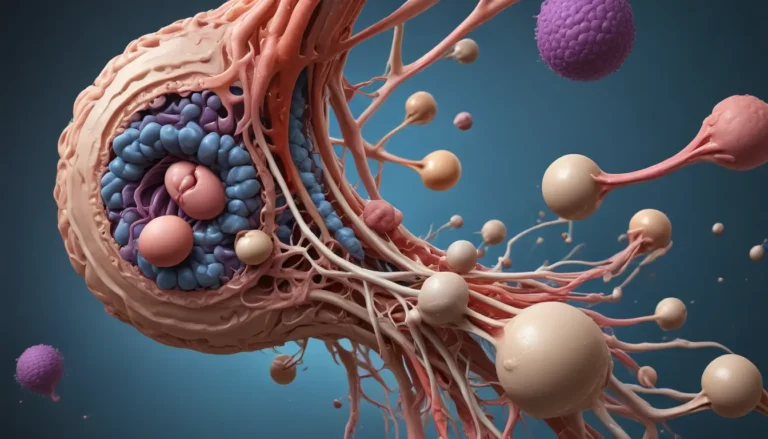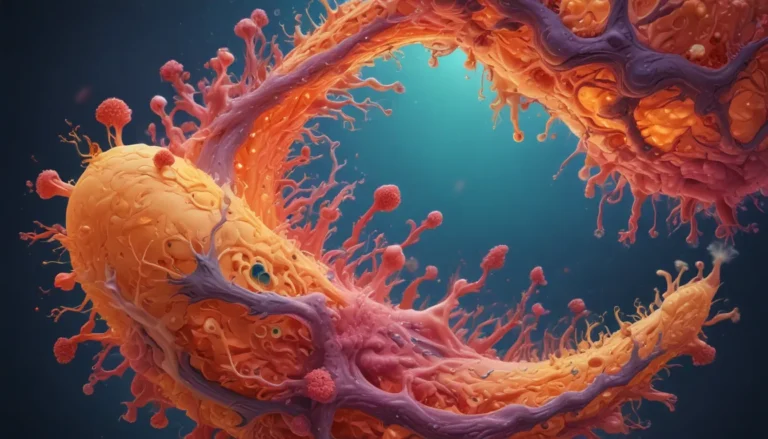A Note About Images: The images used in our articles are for illustration purposes only and may not exactly match the content. They are meant to engage readers, but the text should be relied upon for accurate information.
In the realm of biology, Proton Motive Force (PMF) stands out as a captivating concept that underpins crucial cellular processes. From powering ATP synthesis to facilitating flagellar movement, this phenomenon plays a significant role in sustaining life in both plants and animals. In this article, we will delve into the intricate details of PMF, shedding light on its importance and revealing its impact on cellular activities. Get ready to embark on a journey through the incredible world of Proton Motive Force!
Unveiling the Role of Proton Motive Force
Proton Motive Force serves as a cornerstone in bioenergetics, driving essential cellular processes such as ATP synthesis, active transport, and flagellar movement. Through the movement of protons across cellular membranes, PMF generates an electrochemical gradient that serves as a vital source of energy for cells.
The Powerhouse of ATP Synthesis
At the core of PMF lies its ability to fuel ATP synthesis, the fundamental process that generates energy for cellular activities. Through chemiosmosis, the proton gradient established by PMF across a membrane drives the enzyme ATP synthase to produce ATP, serving as the energy currency that powers various biological functions.
Empowering Active Transport
Active transport, the process of moving molecules across a membrane against their concentration gradient, relies on the energy provided by PMF. By powering pumps and transporters, PMF maintains ion gradients and regulates cellular homeostasis, essential for the proper functioning of cells.
The Generation of PMF: Mitochondria and Beyond
In eukaryotic cells, mitochondria serve as the primary site for PMF generation. Through aerobic respiration, the electron transport chain pumps protons across the inner mitochondrial membrane, creating a proton gradient that drives ATP synthesis. However, PMF is not exclusive to eukaryotic cells, as bacterial cells also utilize it for processes such as ATP production and nutrient uptake.
The Essential Role of PMF in Flagellar Movement
Flagella, whip-like structures that enable cellular movement in various organisms, rely on PMF for their rotation. This phenomenon allows bacteria to navigate their environment and aids in the movement of sperm in animals, highlighting the diverse roles of PMF in the biological realm.
Lethal Consequences of PMF Disruption
Disrupting or inhibiting PMF can have severe repercussions on cellular functions, leading to cell death. Certain antibiotics target the proton gradient in bacterial cells, disrupting vital processes and highlighting the critical role of PMF in sustaining cellular activities.
Beyond Energy Production: PMF in Signal Transduction
In addition to its role in energy production, PMF also partakes in signal transduction pathways. Changes in PMF levels can trigger signaling cascades that regulate various cellular responses, including gene expression and cell differentiation, showcasing the multifaceted nature of PMF in cellular biology.
In a nutshell, Proton Motive Force stands as a captivating phenomenon that powers essential cellular processes, from ATP synthesis to flagellar movement and signal transduction. Whether in mitochondria, bacterial cells, or flagella, PMF shines as a fundamental concept that illuminates the wondrous world of bioenergetics.
Delving Deeper: Exploring Membrane Potential and Oxidative Phosphorylation
To further expand your understanding of cellular biology, consider exploring membrane potential and its pivotal role in cell signaling and communication. Unravel the secrets of the proton gradient and its significance in the electron transport chain. Lastly, delve into oxidative phosphorylation, the process that harnesses the power of proton motive force to generate ATP, the life’s energy currency.
Frequently Asked Questions
-
What is proton motive force?
Proton motive force is the electrochemical gradient generated by the movement of protons across a membrane, serving as an essential energy source for cellular processes. -
How is proton motive force generated?
Proton motive force is generated by electron transport chains that transfer electrons and pump protons across the membrane, creating a concentration gradient of protons and a potential difference. -
What is the role of proton motive force in ATP synthesis?
Proton motive force is utilized by ATP synthase, an enzyme complex, to convert ADP into ATP. The flow of protons through ATP synthase drives the synthesis of ATP, the main energy currency of cells. -
Can proton motive force be found in all living organisms?
Yes, proton motive force is present in all living organisms, including bacteria, archaea, and eukaryotes, serving as a universal mechanism for energy production and utilization in cells. -
How is proton motive force used in cellular transport?
Proton motive force powers the transport of molecules across membranes, facilitating the movement of ions, nutrients, and other substrates through protein channels or transporters. -
Can proton motive force be harnessed for practical applications?
Indeed, proton motive force holds potential applications in various fields, including biofuel cells, drug delivery systems, and nanotechnology-based devices. Its utilization can lead to more efficient energy production and utilization.
As you dive into the enthralling world of Proton Motive Force, remember that understanding the principles of cellular energy production opens doors to innovative approaches in energy production, drug delivery systems, and molecular transport mechanisms. Join us in unraveling the mysteries of cellular biology and uncover the wonders of PMF, the powerhouse behind cellular activities.






